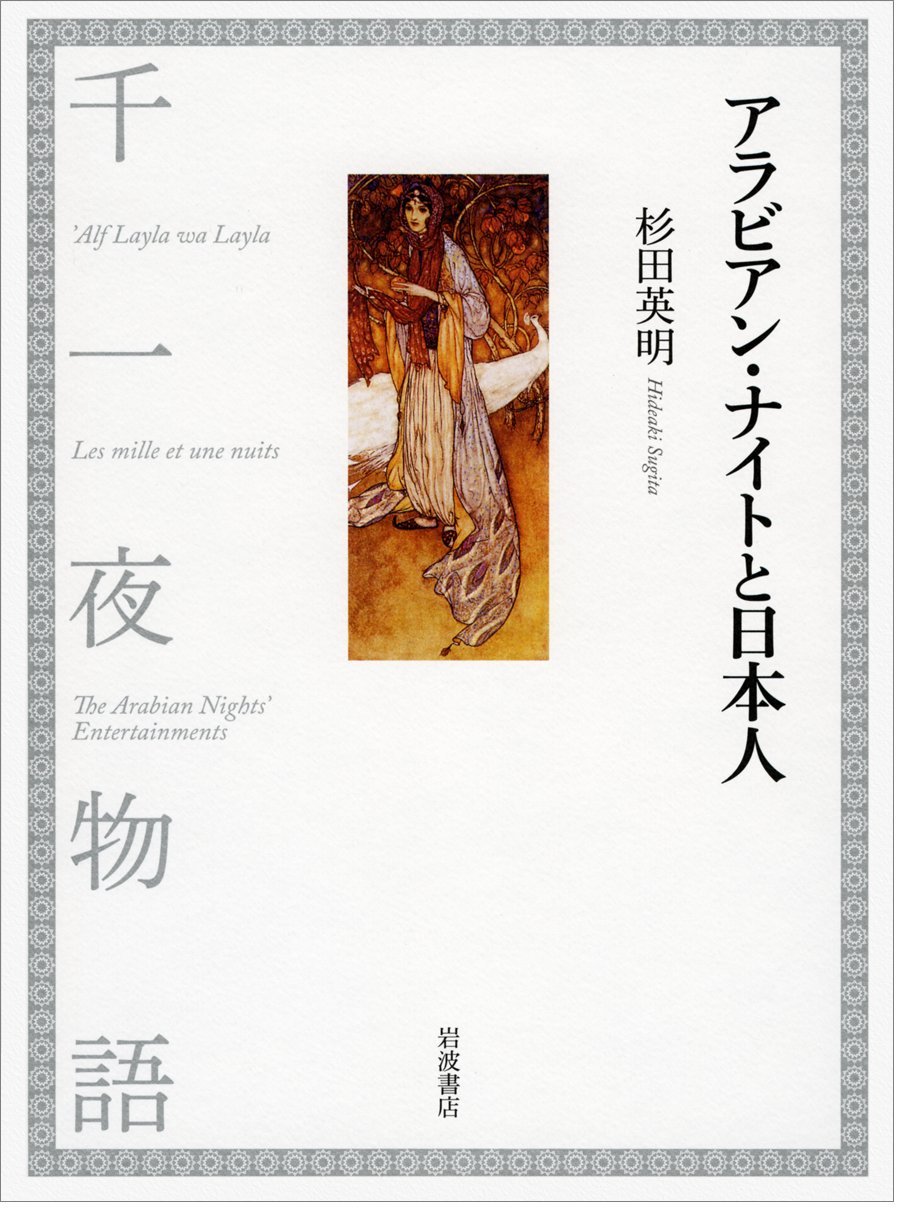
Title
Arabian Naito to Nihonjin (The Arabian Nights in Modern Japan)
Size
1016 pages, A5 format, hardcover
Language
Japanese
Released
September 27, 2012
ISBN
978-4-00-022067-5
Published by
Iwanami Shoten, Publishers
Book Info
See Book Availability at Library
Japanese Page
The Thousand and One Nights, known as the Arabian Nights in English speaking countries and Japan, was originally a collection of Arabic stories entitled Alf Layla wa Layla, which had been handed down orally in the Arab world for over ten centuries. This book explores how it has been accepted in Japan since the last days of the Tokugawa government and the Meiji Era (1868–1912) up until today, by examining various topics such as art, literature, drama, film, ballet, popular culture including children's comics and animated cartoons, as well as education and academic investigations, in order to discover the subterranean vein of Japanese culture that has so far received little or no attention.
The Arabian Nights was first translated into French in the early eighteenth century by the famous French Orientalist Antoine Galland and became extremely popular in the West. It was subsequently retranslated into several European languages. Moreover, two original Arabic versions were compiled in the early nineteenth century. Later on, new European translations that relied on these Arabic texts were provided by Edward William Lane, Richard Burton, Joseph Charles Victor Mardrus and other Orientalists. The Arabian Nights was introduced into Japan during the Meiji Era mainly through the English retranslations and adaptations of Galland's translation on the one hand, and the original English and French translations directly made from Arabic on the other. Galland's translation had its background in the French royal society, and the translation by Lane was destined for family reading. Therefore, both of them were “sterilized,” as one might put it. On the contrary, the translations by Burton and Mardrus were skewed by their personalities and preconceptions and had additional descriptions that would rouse the readers' interest of a sexual nature. As a result, the introduction of these translations to Japan during the Taishō and the early Shōwa Eras (which roughly correspond to the 1910s and 1920s) brought about a polarization between juvenile and erotic literature.
It is worthwhile noting that the second abridged Japanese translation entitled Zensekai Ichidai Kisho (The Most Curious Book in the Whole World, 1883–88) by Inoue Tsutomu exerted a remarkable influence over the reading public. It was followed by Sugitani Daisui's and Nakajima Kotō's translations (1915–16 and 1924–31 respectively) in the field of children's literature, and those of Ōya Sōichi and Ōba Masafumi (1929–30 and 1951–56 respectively) from Burton in the field of erotic literature. Among the writers who were interested in the stories' plots and expressions are Ozaki Kōyō and Izumi Kyōka who pioneered the adaptation of the stories to their own works, as well as others such as Inagaki Taruho and Ryūtanji Yū in the pre-war period, and Mishima Yukio and Hoshi Shin-ichi in the post-war period, to mention a few. Besides the translation and adaptations of the original European texts, the translation of the works of Western literature that were influenced by the Arabian Nights, and the introduction of texts translated from the Arabian Nights as language teaching materials in Middle and High Schools were also important channels for presenting the stories. In the twentieth century, European and American Arabian Nights films were imported one after another, which in turn were to give birth to a series of post-war domestic animation films. Since the 1920s, related works have also been staged repeatedly by the Takarazuka Girls' Operetta Troupe (later renamed the Takarazuka Revue).
The Arabian Nights instilled certain preconceptions about the Middle East in the minds of readers, which served as a frame of reference for tourists that visited the area. It cannot be denied that academic research that relied on translations from European languages were flawed to a certain degree. Although there were some pioneering scholars that were interested in the original Arabic version of the stories during the early Shōwa period (the 1930s and the 1940s), it was not until 1992 that a direct translation from Arabic was completed.
In general, the process of accepting European literature in Japan is regarded as an important subject matter in comparative literature studies. What is quite characteristic of the Arabian Nights, however, is that the texts translated into European languages were not the sole consecrated ones, but there was something behind them, which is the Arabic original. Keeping the Middle East in its proper perspective, this book attempts to view European translations from a relative standpoint and disentangle the complicated relationships among their influences in terms of trilateration.
(Written by Hideaki Sugita, Professor, Graduate School of Arts and Sciences / 2017)
Related Info
http://www.zayedaward.ae/previous-awards/2015/



 Find a book
Find a book

